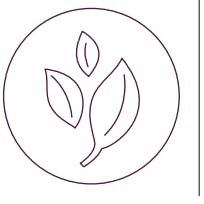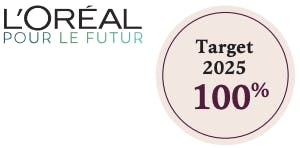Environmental impact and tools
To evaluate the impact of its finished products, the Group makes the following tools available in its design centres:
- the innovative tool SPOT (Sustainable Product Optimisation Tool), since 2017, to meet the Group’s sustainability commitments (see section 4.3.1.3.1. “Eco-designed products” of this document), which assesses the impact of packaging; and
- a tool to help in reducing the environmental impacts of transportation packaging for packaging components from suppliers to plants and transportation packaging of finished products from plants to the Group’s distribution centres, particularly through optimisation of palletisation.
To share its research and results with the cosmetics industry, in 2018 the L’Oréal Group created the SPICE initiative (Sustainable Packaging Initiative for Cosmetics) with Quantis (an environmental consulting firm). The purpose of SPICE is to share the best practices and methodologies of each cosmetics player in order to harmonise and enhance the methods used to assess the cosmetic packaging environmental footprint to make it easier to understand for consumers. L’Oréal shares its own SPOT- Packaging methodology through the SPICE initiative. Tracking of work and achievements, as well as the plan for the coming months, are accessible on the open platform www.Open-Spice.com. The SPICE initiative now has more than 25 members worldwide. The dedicated SPICE tool was launched in July 2020.
Since 2018, L’Oréal has been implementing worldwide a programme to eco-design POS materials and furnishings with its teams and suppliers:
- 14 robust and pragmatic golden rules;
- training support for teams and suppliers; and
- monitoring indicators, sharing best practices and organising inter-team challenges, including our suppliers.
The principles relate in particular to materials: recycled materials and those from biobased sources, their weight,recyclability/separability and the optimisation of electricity consumption (for permanent POS). L’Oréal is testing and developing circular economy processes with its suppliers and local operators, notably in the context of uninstalling, recycling or donations. L’Oréal continues to share its best practice, for example, with the French Federation for Beauty Companies (Fédération des Entreprises de la Beauté - FEBEA).
In 2021, L’Oréal continued the roll out of its “Sustainable retail box” programme, aligned with the highest standards, providing concrete actions for the design and responsible construction of its free-standing stores (materials, energy, accessibility, water management, construction waste, interior air quality, ergonomics, etc.) with a view to having them certified. In 2021, 20 of the 22 new or renovated Group stores made a commitment to an eco-responsible process aligned with the highest standards of the Group. Seven of them recorded an eco-design rate of over 100% or are certified LEED Gold(1).
For our permanent POS materials, but also our Free-Standing stores, the Group uses design firms that are experts in lighting to optimise energy consumption without compromising the quality of in-store lighting. The first pilot projects are very promising, in particular for the reduction of environmental impacts. In 2021, the teams worked on new operational guidelines on this subject. This new initiative also benefits the Group’s distributors, helping them to improve and optimise their energy consumption.

In 2021, 91% of advertising displays at points of sale were eco-designed and 32% of free-standing stores, whether new or refurbished, were designed and built in line with the Group’s principles of sustainable development.

4.3.1.3.2. Involving consumers in the Group’s transformation
A/ Product quality and safety: a priority
A chapter of L’Oréal’s Code of Ethics is devoted to product quality and safety.
L’Oréal develops and devises cosmetics with high-quality formulas that meet the needs of both consumers and professionals. As consumer safety is an absolute priority for L’Oréal, assessing the safety of these formulas and their ingredients is central to any new product development process and a prerequisite for any new product being brought to the market. As a result, consumers across the globe have access to cosmetics of identical quality, with proven safety records.
L’Oréal factories around the world produce cosmetic products that comply with ISO international standards. As such, almost all factories are ISO 9001 certified and implement the requirements of ISO 22716 on Good Manufacturing Practices for cosmetics. This standard sets out all the requirements for production, filling and packing, control, storage and shipment in order for a cosmetic product to comply with the defined quality.
100% of the Group’s products are subject to a rigorous safety assessment and a safety report is issued for them.
The Worldwide Safety Evaluation Department specifically evaluates the safety of raw materials and finished products. It establishes the toxicological profile of the ingredients used and the formulas prior to their launch on the market. These same safety standards are applied worldwide to protect the health of consumers from across the globe.
(1) Leadership in Energy and Environmental Design, a stringent American environmental certification issued by the US Green Building Council.
